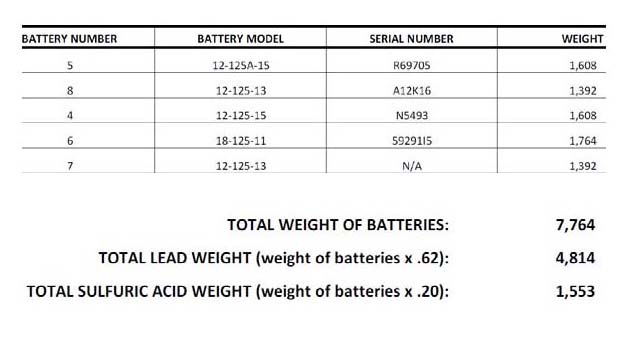When the average safety manager faces a new body of dense regulatory text, we brace ourselves for several hours of analysis, investigation and, if we’re honest with ourselves, confusion. Add oodles of scientific mumbo jumbo to the page and our eyes glaze over.
The Emergency Planning and Community Right-to-Know Act (EPCRA) is that type of regulation. You can imagine my relief when I incorrectly concluded that the annual Tier II report required by EPCRA did not apply to my distributor-employer. “Whew! We don’t warehouse nearly enough drain cleaner to worry about this.” I soon learned my scope was too narrow; assessing our inventory was not enough.
The electric forklifts we use to maneuver product are powered by a huge battery. Within that battery are significant levels of sulfuric acid and lead, two chemicals that fall squarely within the jurisdiction of the EPCRA. Below is a general introduction to Tier II applicability to electric forklifts. Readers are encouraged to contact the SERC, discussed below, or a consultant for detailed explanations or trainings.
Reporting thresholds
Chemicals classified as an extremely hazardous substance or a hazardous chemical must be reported to the designated state agency (SERC) every year if the total amount used or stored at the facility at any point in time exceeds the reporting threshold. The reporting threshold for sulfuric acid, an extremely hazardous substance, is 500 lb. The reporting threshold for lead, a hazardous chemical, is 10,000 lb.
Calculating chemical quantities
You know you have an electric forklift, but you have no idea what’s inside the battery or how much. Thankfully, your forklift battery vendor probably will provide a battery report upon request. Below are excerpts from First Supply’s Eau Claire facility’s battery report:

Above are excerpts from First Supply’s Eau Claire facility’s battery report:
At 4,814 lb., the total lead weight is under the 10,000-lb. reporting threshold, but 1,553 lb. of sulfuric acid is over the 500-lb. reporting threshold, so we filed a Tier II report for Eau Claire.
Tier II report information
In addition to the chemical name and quantity, be prepared to provide the following information on your Tier II report. The battery’s safety data sheet (SDS) or the battery vendor will provide answers to many of these questions.
- Name of the facility owner and emergency coordinator;
- Whether the chemical is pure or a mixture;
- Whether the chemical is solid, liquid or gas;
- Whether the chemical is an extremely hazardous substance (EHS);
- The maximum daily amount present at the facility;
- The average daily amount present at the facility;
- Hazard category of the chemical;
- Chemical storage location;
- Number of days the chemical was present onsite per calendar year; and
- The container type and storage conditions.
When to file the report
You must file a complete Tier II report no later than March 1. The due date is firm and extensions are not granted. Please consult the link above to determine whether your state imposes additional deadlines.
File with the SERC
Submit the Tier II report to the state in which the facility sits. If your corporate headquarters is located in Wisconsin, but your Minneapolis facility has forklifts that exceed the reporting threshold, you file the Tier II report with Minnesota. You must file a Tier II report for every facility that exceeds the reporting threshold. So, if you have three facilities in Minneapolis that exceed the reporting threshold, you file three Tier II reports. Note that some states charge a filing fee.
Visit www.epa.gov/epcra/state-tier-ii-reporting-requirements-and-procedures for a direct link to the SERC responsible for receiving Tier II reports. Most SERCs have a user-friendly electronic reporting portal with helpful dropdown menus and explanation boxes.
File report with the LERC
Often the SERC will automatically forward your Tier II report to the city or county local emergency planning committee (LERC) and fire department for you, but some do not. EPCRA requires you to file with the LERC and fire department, so be sure to confirm the notification procedure with
the SERC.
EPN report
If the total weight of sulfuric acid or lead at a facility is above the threshold planning quantity (TPQ), the facility must also file an Emergency Planning Notification Report (EPN) with the SERC. Sulfuric acid’s TPQ is 1,000 lb., and lead’s TPQ is 10,000 lb. The sulfuric acid at our Eau Claire facility, noted above, exceeded 1,000 lb. so this extra report and one-time filing fee were necessary. The EPN report itself is fairly simple, but the fee can be significant: $1,296 per facility in Wisconsin. Some states, such as Minnesota and Iowa, do not charge an EPN filing fee.
As daunting as the EPCRA appears, rest assured you don’t need a chemistry degree to successfully file a Tier II report. If you dedicate a few weeks to gather battery reports and SDS from battery vendors, and a few days to familiarize yourself with the SERC portal, you will ace it.




